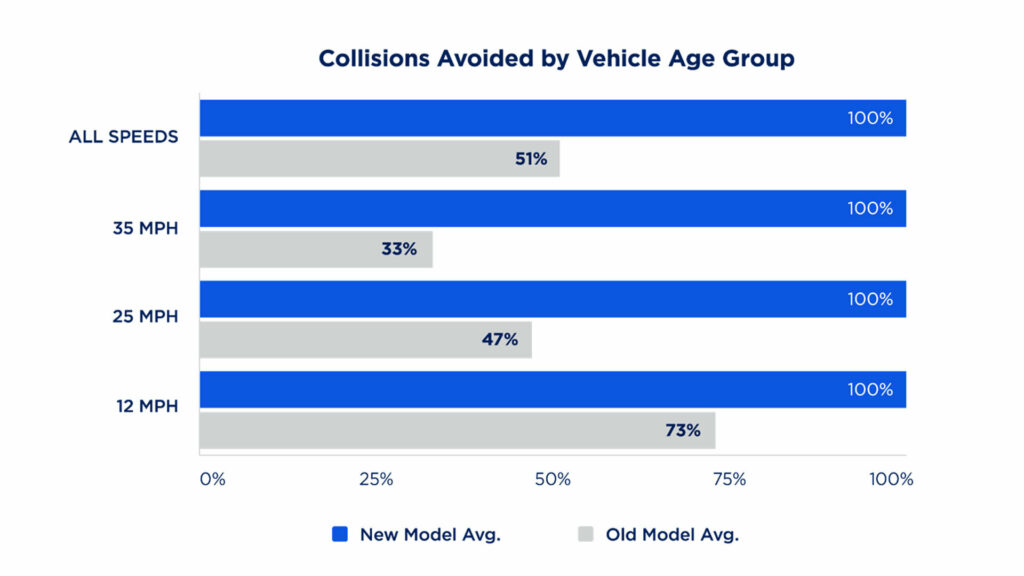- AAA testing has found a significant improvement in automatic emergency braking systems over the course of the past seven years.
- All 2024 models were able to successfully avoid a collision at 35 mph, while old models only had a success rate of 33%.
- The National Highway Traffic Safety Administration will require vehicles to have automatic emergency braking systems that avoid collisions at 62 mph by late 2029.
Automatic Emergency Braking (AEB) systems were introduced over two decades ago, but new tests have shown modern systems are far more capable than their predecessors. This means a few model years could be the difference between a crash and a near miss.
The results speak for themselves as every single 2024 model tested by AAA successfully avoided collisions at speeds up to 35 mph (56 km/h). For 2017 and 2018 models, their success rate was a far less impressive 51%.
More: Auto Braking To Become Mandatory On All New U.S. Cars By 2029
As part of the test, AAA compared a 2017 Jeep Grand Cherokee, 2018 Nissan Rogue, and 2018 Subaru Outback to their 2024 counterparts in simulated emergency braking situations at 12 mph (19 km/h), 25 mph (40 km/h), and 35 mph (56 km/h). The results are pretty telling as old models could only avoid 73% of collisions at 12 mph (19 km/h). That rate fell to 47% at 25 mph (40 km/h) and a dismal 33% at 35 mph (56 km/h).
Since all new models were able to successfully avoid a collision at 35 mph (56 km/h) and data shows a majority of miles driven occur at higher speeds, researchers pushed the envelope to see how capable the AEB systems really were. “Three out of four vehicles” were able to avoid a collision at 45 mph (72 km/h), so those that passed were subjected to the same test at 55 mph (89 km/h). However, none could avoid a crash at those speeds.
The tests showed modern automatic emergency braking systems are far more capable thanks to their advanced cameras and sensors. AAA’s director of automotive engineering research, Greg Brannon, said the advancements were “commendable,” but “there is still significant work ahead to ensure the systems work at higher speeds.”
However, automakers will soon have to address this as the National Highway Traffic Safety Administration finalized a new Federal Motor Vehicle Safety Standard in April that will require automatic emergency braking systems on all passenger cars and light trucks by September 2029. These systems will need to be able to work at speeds up to 62 mph (100 km/h) and be able to detect pedestrians in daylight and darkness.
When the rule goes into effect, it could have a dramatic impact on safety. According to government estimates, the change could save at least 360 lives annually as well as prevent at least 24,000 injuries every year.




